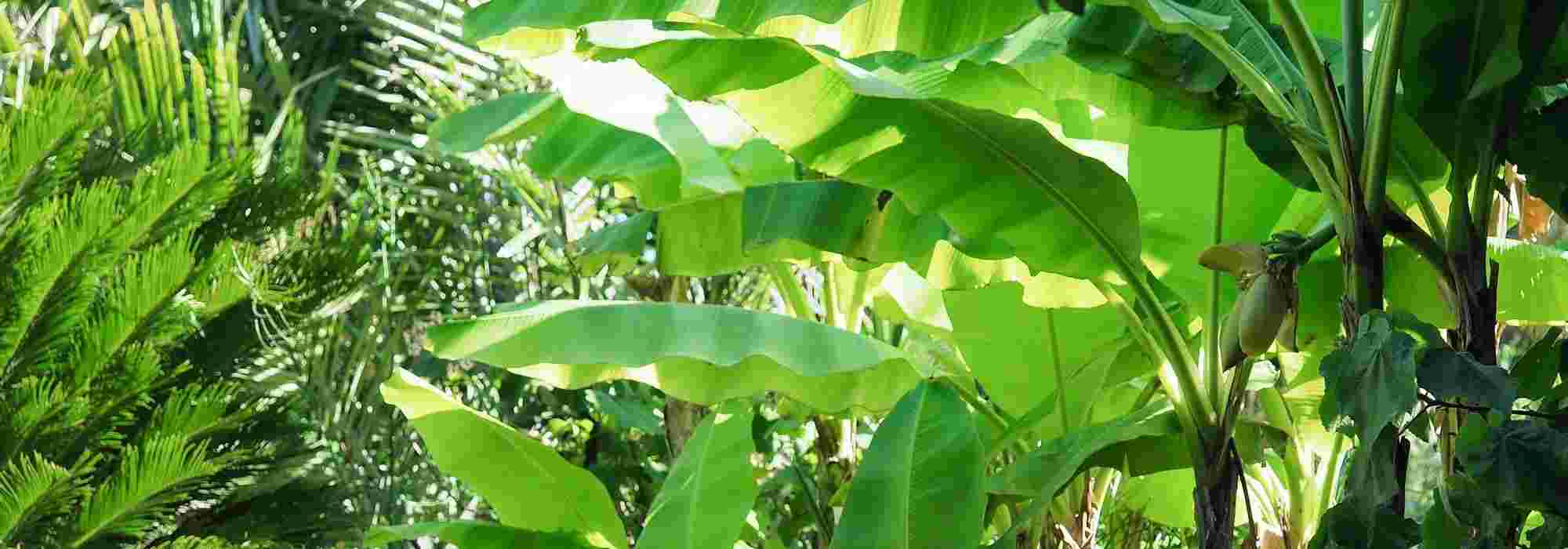
Potted Banana tree: planting and care
Everything you need to successfully grow a banana plant in a pot
Contents
Symbols of exotica, banana plants are among those plants that immediately create a lush, transportive atmosphere with their tropical appearance and their huge green leaves. If some varieties are hardy, such as Musa basjoo, most banana plants are sensitive to cold and are therefore often grown in pots, on a large terrace or as an indoor plant where they make a striking feature. From choice of container to choice of potting compost, we reveal our secrets for successful container growing!
And to learn all about banana plants and how to grow them, discover our plant sheet : “Banana plant: planting, cultivation and maintenance, in pot or in garden”
Which pot should I choose for a banana plant?
Banana plant is an imposing plant that usually grows very quickly, it will need a large volume of soil to develop well and spread its immense foliage.
Consider future height of banana plant (2–4 m for Himalayan banana, 3–5 m for Japanese banana!). Container size should be at least 30 × 30 cm. Choose, according to preference, a 30-litre round pot or a large planter measuring 60 × 60 cm. Pot must have drainage holes to allow water to escape, because although banana plant appreciates humid environments, in case of excess moisture its roots will eventually rot, as banana plant dislikes having its roots in water.
Which substrate should I use?
Banana plant is a heavy feeder; grown in a pot it will need an even richer growing medium in organic matter and trace elements. Although banana plant prefers fresh, even moist soils, it still requires a well-draining growing medium.
Give it a fertile mix made up of 1/4 garden soil, 1/4 potting compost, 1/4 well-rotted manure or compost and 1/4 coarse horticultural sand or pumice for drainage. A good potting compost for houseplants will also be suitable.
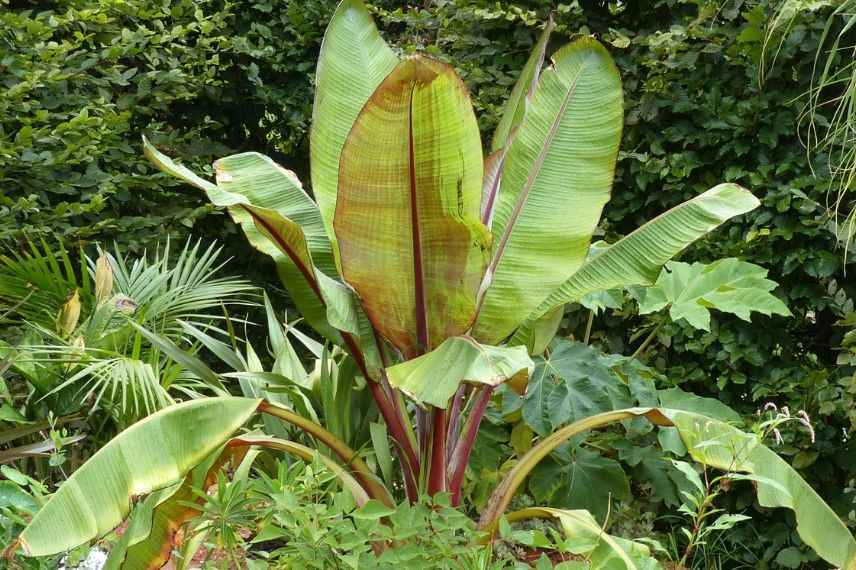
Discover other Musa - Banana tree
View all →Available in 3 sizes
Available in 1 sizes
Available in 2 sizes
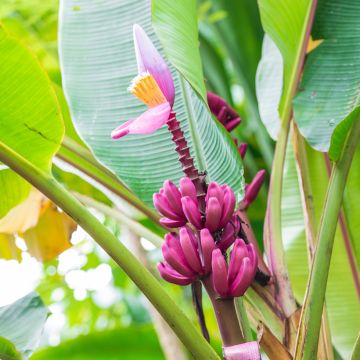
Available in 1 sizes
Available in 1 sizes
Available in 2 sizes
Available in 1 sizes
Available in 1 sizes
Available in 2 sizes
How do I plant a banana plant in a pot?
For planting your banana tree :
- Start by spreading a layer of drainage material at the bottom of a container with drainage holes (gravel, broken pot sherds, clay balls, pumice)
- Plant in a rich mix made ideally of equal parts good horticultural potting compost, garden soil and well‑rotted compost or manure, with some coarse sand for drainage
- Position your banana tree in the container
- Backfill then firm down
- Water thoroughly and continue to water as often as necessary after planting: soil should remain moist.
- During the growing season, feed every fortnight with a liquid fertiliser for foliage plants added to the watering water
Note: you can place a saucer under the pot to protect your flooring. However, after watering, do not leave water standing in it, as this can cause root rot in your banana tree.
Where to place it?
You can easily move your banana tree outdoors in spring, once risk of frost has passed around late May, then shelter it from cold in autumn by bringing it inside a conservatory. Native to the tropics, banana tree needs warmth. Outside, choose a sheltered spot in full sun or partial shade, ideally against a south‑facing wall. You can place your pot beside a water feature, pond or swimming pool: a guaranteed taste of the tropics!
However, if you grow it in a greenhouse or conservatory, banana tree requires good light; it does not tolerate low light but avoid placing it in direct sunlight, for example behind a south‑facing window, to prevent sun scorching the foliage. It grows well when temperature is between 18–22 °C. This frost‑tender tropical plant needs temperatures to remain above 10 °C. Indoors, it will pair well with other orangery plants, such as oleanders and citrus trees.
Read also
10 hardy plants for an exotic dry gardenCaring for banana plants in pots
Watering
Potted banana tree requires water, especially during the growing period from spring to autumn. Watering is essential as it prefers cool to moist substrates: water it about 2 to 3 times a week as soon as the surface of the soil becomes dry. Never let the soil dry out completely… nor become waterlogged, banana tree does not like to have its feet in water! Indoors, regularly mist the foliage to provide the humidity it needs; indoor air is often too dry. We suggest placing the pot on a saucer filled with damp clay pebbles to help maintain a high humidity level. Reduce water in winter to avoid root rot.
Fertilisation
Potted banana tree is fairly voracious and requires regular fertiliser applications:
- Add a liquid fertiliser for houseplants to the watering water every 15 days.
- Stop feeding in winter until vegetative growth resumes in March–April.
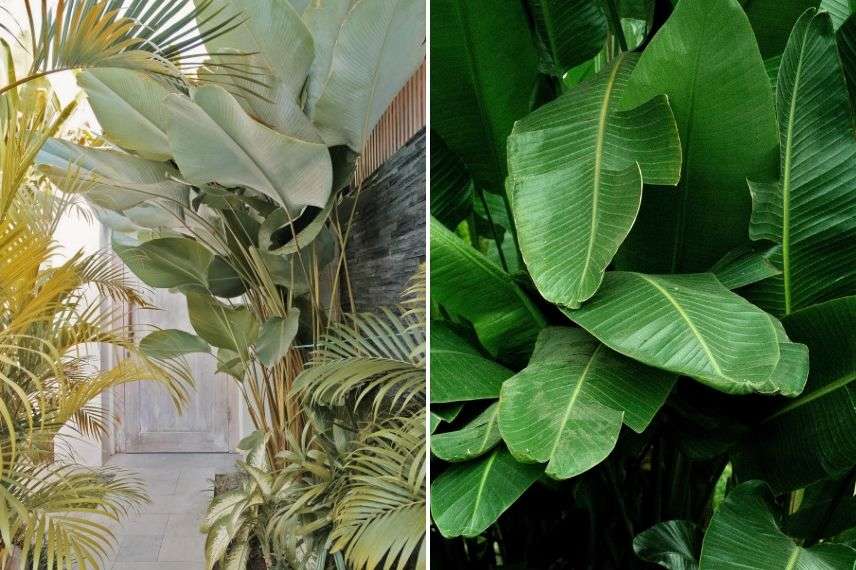
Pruning
Banana tree is not pruned. You can simply clean away old leaves in autumn to encourage plant to develop entirely new leaf growth.
Repotting
Repotting your banana tree is recommended every two years at the start of spring, into the same pot or a slightly larger pot. If you do not wish to repot, top-dress from time to time: scrape away a little potting compost from the surface to a few centimetres, then replace with potting compost for houseplants mixed with some well‑rotted compost.
How to protect it from pests?
Banana trees grown indoors or in a greenhouse are more vulnerable and can suffer attacks by mealybugs that thrive in dry indoor atmospheres: small insects recognisable by the powdery clusters they leave on leaves. They slow growth and discolour foliage. To get rid of them, maintain good ambient humidity and remove insects with a cotton pad soaked in 90° alcohol or simply soapy water, then treat with sprays of vegetable oil mixed with black soap. Repeat two or three times at 15‑day intervals.
Also watch out for red spider mites and aphids commonly found on indoor specimens: spray soapy water onto the foliage to dislodge them.
How to protect your potted banana plant from the cold?
Although some species of banana (Musa basjoo) tolerate temperatures as low as -12/-15°C, it is preferable to protect them from cold if you want to keep their stump. In regions with very harsh winters for growing very frost-sensitive species such as Ensete ventricosum, winter protection is essential.
If you keep the pot outdoors :
Before frost arrives, wrap its trunk in its large leaves, which will act like a protective padded jacket against frost.
You can also protect your banana plant by cutting its lowest leaves, then install a wire mesh around the pseudo-trunk (leave 20 cm between trunk and mesh to allow air circulation and prevent mould) and fill with dead leaves or straw, even on top. Wrap the whole with a winter fleece to insulate it completely from cold and spread a thick layer of straw or dead leaves around base of banana plant. Remove this protection in spring.
If you keep it indoors :
You can leave it outdoors from late May to September. Bring pot in autumn before hard frosts. Keep it in a greenhouse, conservatory or a cool, bright place sheltered from frost. Limit watering while avoiding letting the base dry out. Put banana plant outside in spring when risk of frost has passed. Keep it in pot or replant banana plant in garden.
- Subscribe!
- Contents
































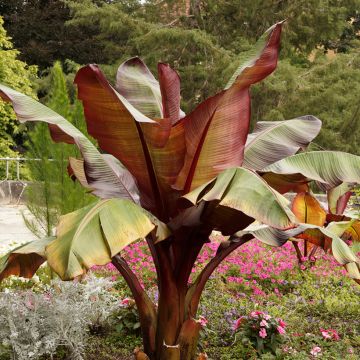
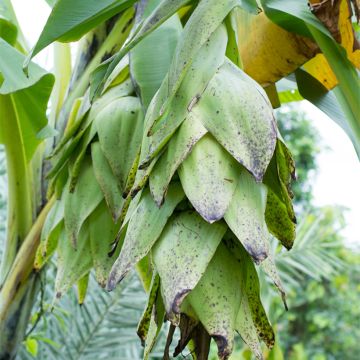
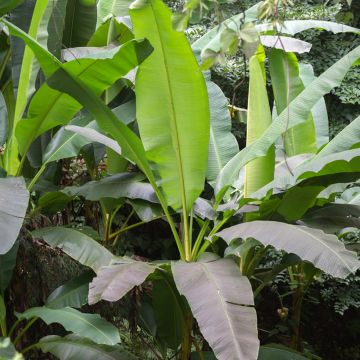
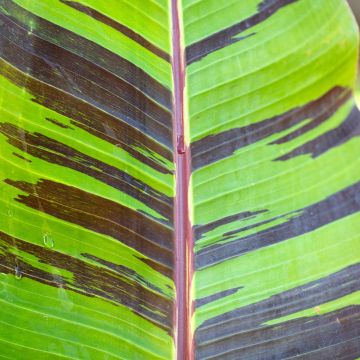
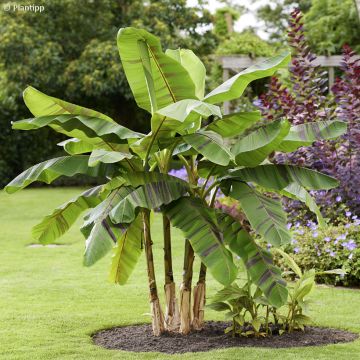
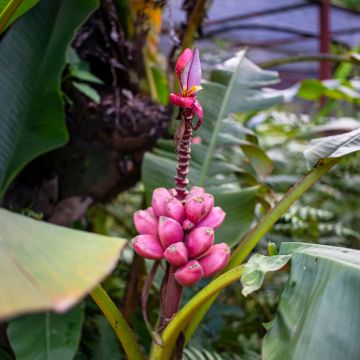
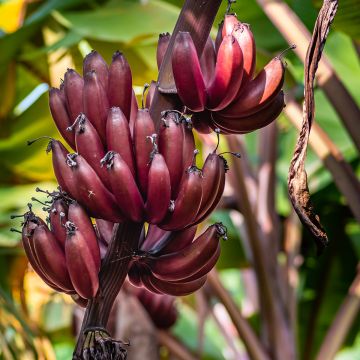
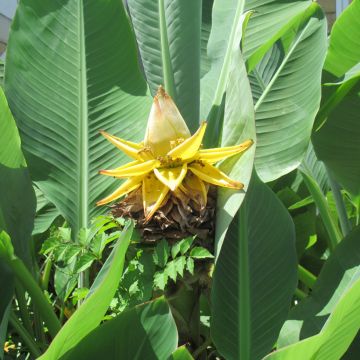
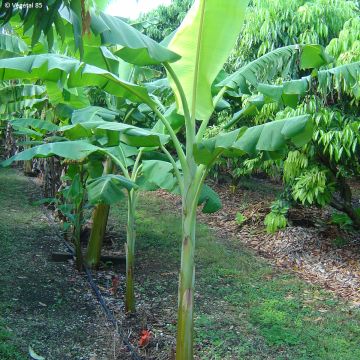
Comments